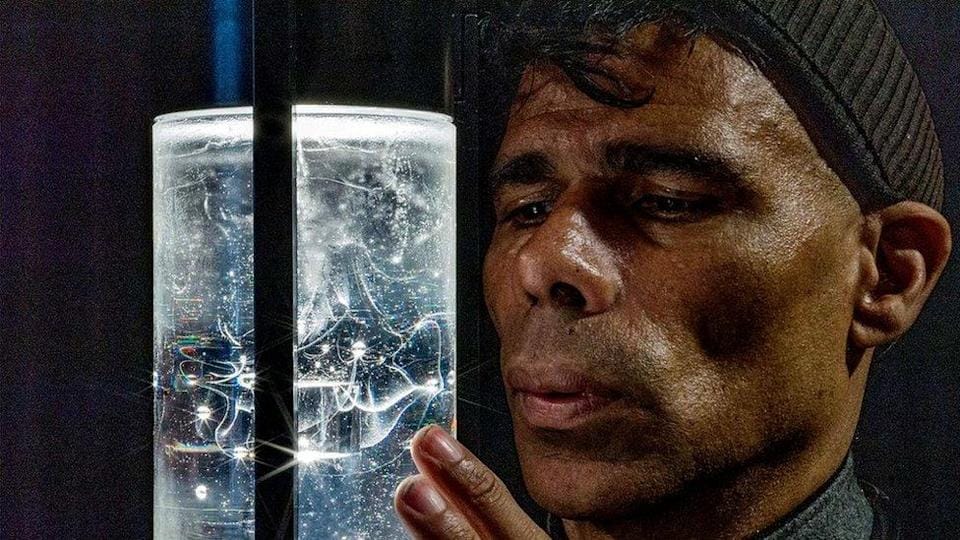
An ampoule containing Antarctic air from 1765 is the focus of a new exhibition. Here’s all about the contents of the Antarctic ice capsule for people attending the Cop26, the climate conference in Glasgow.
What does the Antarctic ice capsule reveal?
Wayne Binitie, an artist spent the last five years collaborating with researchers from the British Antarctic Survey (BAS). Hence, they analyzed and preserved ice cylinders from the past to record the difference and the climate change in the past. The Antarctic ice capsule is the focus of Polar zero, an exhibition at Cop26, the climate conference in Glasgow.
Additionally, it also contains a second cylinder with small air bubbles It was formed when the air was trapped between the falling snow. The Antarctic ice capsule reveals the shocking rate of rising atmospheric carbon dioxide. Additionally, Dr. Robert Mulvaney, the man responsible for mining ice for the BAS said that drilling ice from specific areas is possible. “Snow falls in Antarctica year by year – but there’s no melting going on. So the snow builds up and compresses all the years of snow beneath. As we drill down we’re driving further and further into the past – a bit like counting the rings of a big tree,” said Dr. Mulvaney.
More on the Antarctic ice capsule
“What helps is that every so often we know that a certain volcano blew up in a particular year and we may find evidence of that. So using our drills to find a specific year isn’t quite as hard as you would imagine,” added Dr. Mulvaney. Additionally, Dr. Mulvaney also explained that visitors of the exhibition will also get the chance to hear ancient air popping as the core merges from the insulated tube.
Moreover, it will blend with Binitie’s immersive soundtrack of natural sounds and music. Moreover, they can also touch and taste the ancient iced water. The multisensory exhibit “seems more urgent than ever before to ask what it means to touch and be in touch with the Earth”.
